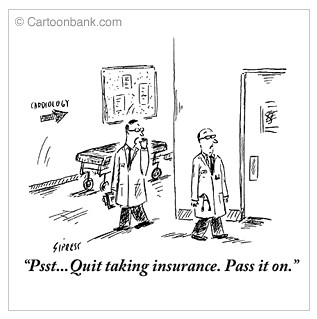
One common question that comes up with doctors looking into doing an
IMP/solo model practice is: how do you take vacation?
This is a problem encountered by all solo physicians, not just those doing the IMP model. For myself, when I first went solo 4+ years ago, I didn't know any FPs in the local community and didn't know who to ask for coverage. So that first summer, I took my own call when my family went on vacation to Banff, Canada for a week. Since I was only seeing about 5 patients a week at that time, I figured no one would even really notice that I was even gone, especially when they could still reach me by phone and e-mail. And no one did. I scheduled patients for physicals the following week while sightseeing, just as if I was back in my own office.
Later on, I met some other solo family physicians through the local hospital medical staff meetings, and asked if they would be interested in doing reciprocal coverage, where I would cover them if they would cover me. It has worked out so far. It helps that our practices generally take the same insurance plans as each other. It also helps that:
1) I have less than 1000 patients so that means fewer calls.
2) My patient population tends to be younger so again that means healthier patients and fewer calls.
3) I still continue to take cellphone calls and e-mail so I can take care of issues quickly and easily that the covering physician might take longer to handle.
Having no employees the first few years of my practice meant not having to worry about paying for their services when I was away. I now have a part-time biller, but she can do her work even when I am away.
This coverage system has allowed me to travel with my family to Palm Springs, Yosemite, Walt Disney World in Orlando, Bar Harbor in Maine, New York City. This summer I have taken my longest vacation yet of 2 weeks. In fact, I am still on vacation, writing this from a Mediterranean cruise ship en route from Sicily to Naples.
While there is Internet access available, it is slow and expensive, so I have not been able to receive and respond to e-mail as quickly as I usually do. Also, I have no cellphone access, so that has resulted in more isolation, which is good for vacationing, but not so good for continuity of care. I know I should be grateful for being cut off from work. There is a tendency among many physicians (me included) to never let go of work, which I am always telling patients that they have to do to reduce stress. I should follow my own advice.
I know there are other solo physicians who take their own call whenever they go on vacation, without arranging for any kind of coverage. I think it depends on how far you go, and what your patient panel is like. If you are a doctor in a rural area with no other primary care physician nearby for coverage, that may be your only option. Hiring a locums doctor is another solution, but I think running a solo IMP model, even temporarily, might freak out your usual locums doctor who is used to the usual set up of having someone else answer the phones, do the scheduling and give the shots.
Since there seems to be a growing number of doctors interested in the IMP model but who are not ready to make the "leap" themselves yet, I think it would be ideal and mutually beneficial for a pre-IMP doctor to do locums coverage for an IMP doctor just to get their feet wet, and at the same time, help out an solo IMP doctor who might not otherwise feel confident about leaving their practice for much-needed R&R time. Something like a Craig's List for IMPs.
Anyways, I hope that all primary care physicians get a chance to take some time to rest, relax and recharge this summer.
Ciao bella!










